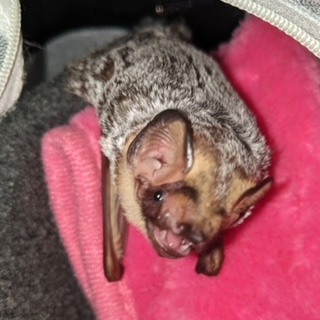On October 26, 2022, bat educator Deborah Hammer gave an online presentation on bats, dispensing bat facts and dispelling bat folklore. Deborah is a board member of both FODM and Bat Conservation and Rescue of Virginia.
 |
|
|
Deborah Hammer giving water to a red |
|
“If you like to eat, think of bats,” she said, noting that bats are the sole pollinator of some fruits and help pollinate coffee, chocolate and sugar, for example.
Other fascinating bat facts:
- Worldwide, there are around 1,400 bat species on every continent, but not in polar regions and some deserts.
- Virginia has at least 17 bat species and observers have documented at least seven bat species in Dyke Marsh.
- Using their elongated hands and wing-like membranes, bats are the only mammal capable of true flight, often flying in a zigzag pattern.
- Most bats are insect eaters. A big brown bat (Eptesicus fuscus) can consume 3,000 mosquitoes a night.
- Bats have keen hearing and are most active at night. They use ecolocation to find insects and dodge obstacles in the dark.
- The world’s bat populations are declining, because of feeding and roosting habitat loss, a fungal disease called white nose syndrome, light pollution, collisions and other factors.
- Bats are not rodents. Their next closest relatives are canines.
- Of the 1,400 species, only three drink blood. They are found in Central and South America.
 |
 |
|
| Hoary bat (Lasiurus cinereus) smiling for the camera Photo by Deborah Hammer |
Big brown bat (Eptesicus fuscus) being shy Photo by Deborah Hammer |
To see a recording of this presentation, click here.
The program was sponsored by FODM, the Friends of Huntley Meadows Park and the Friends of Accotink Creek.

